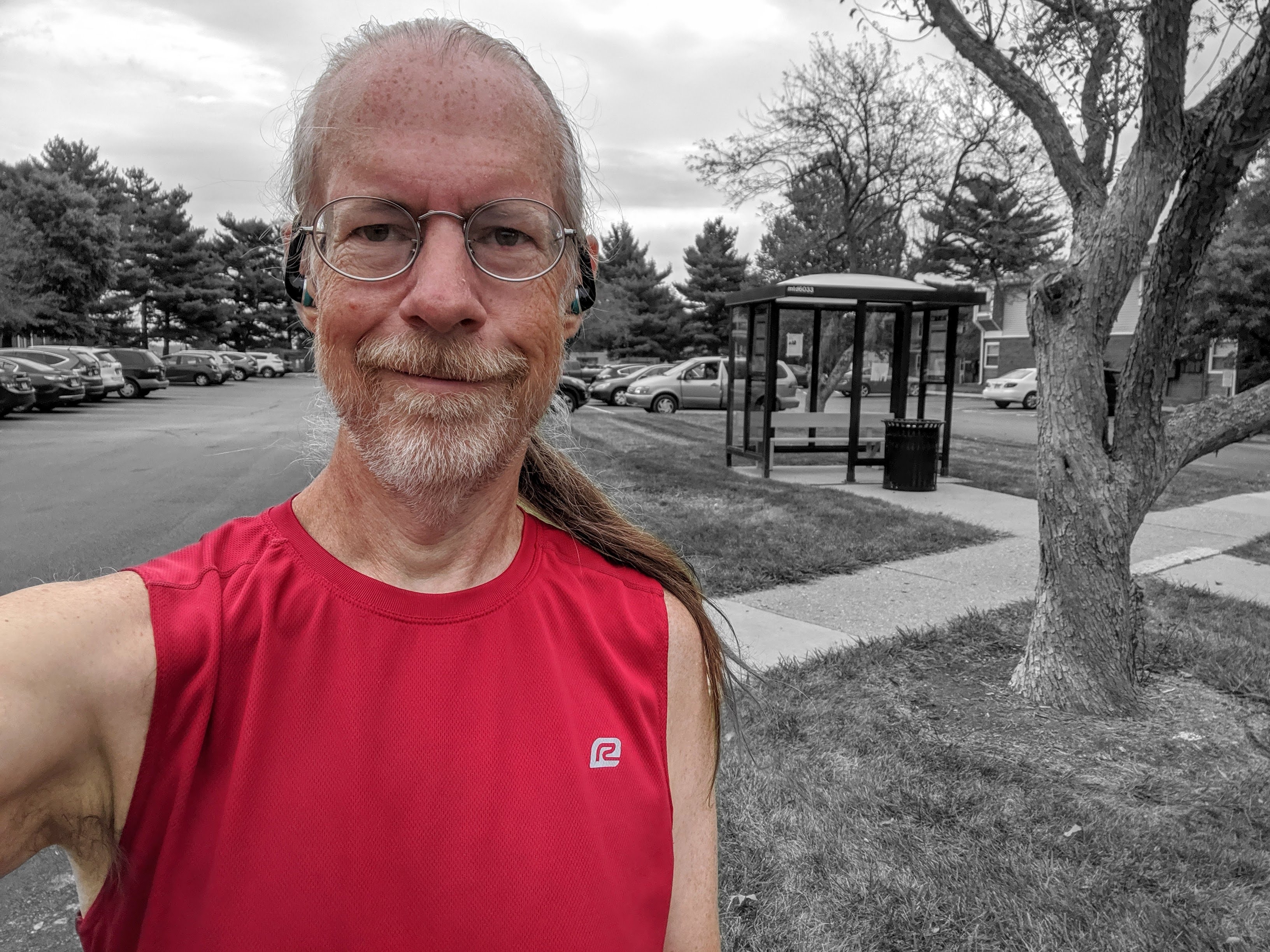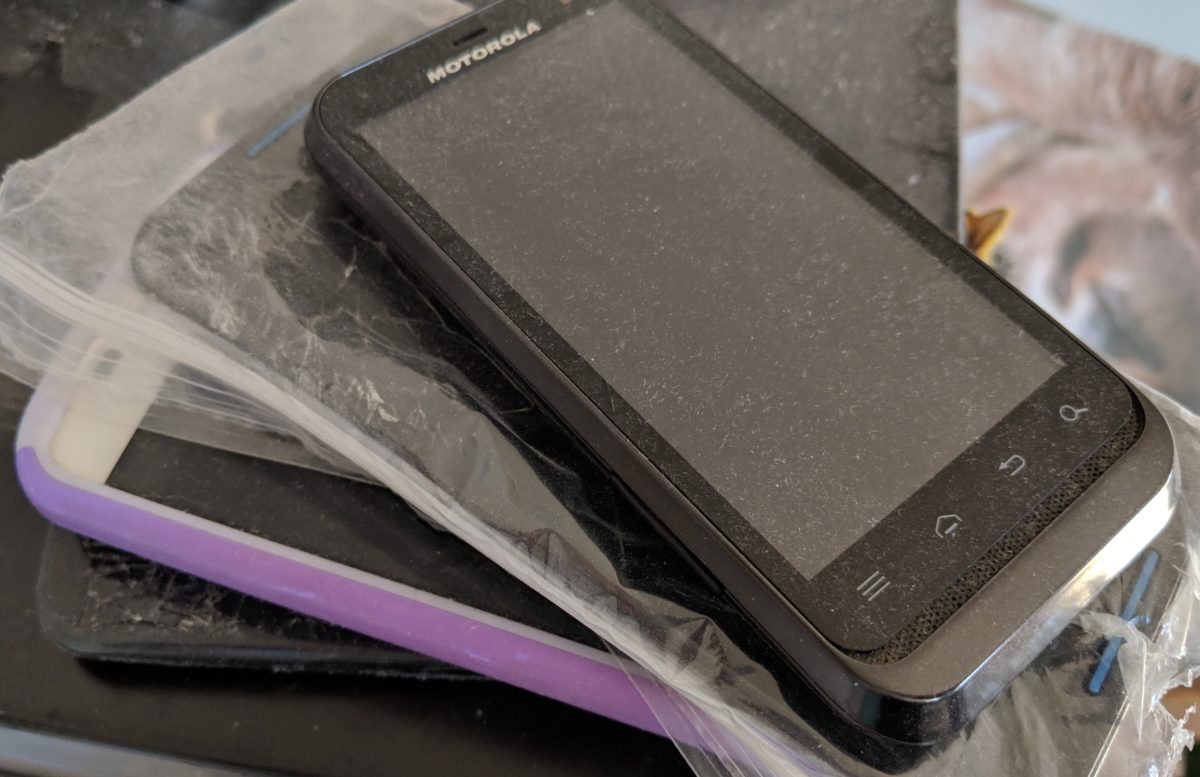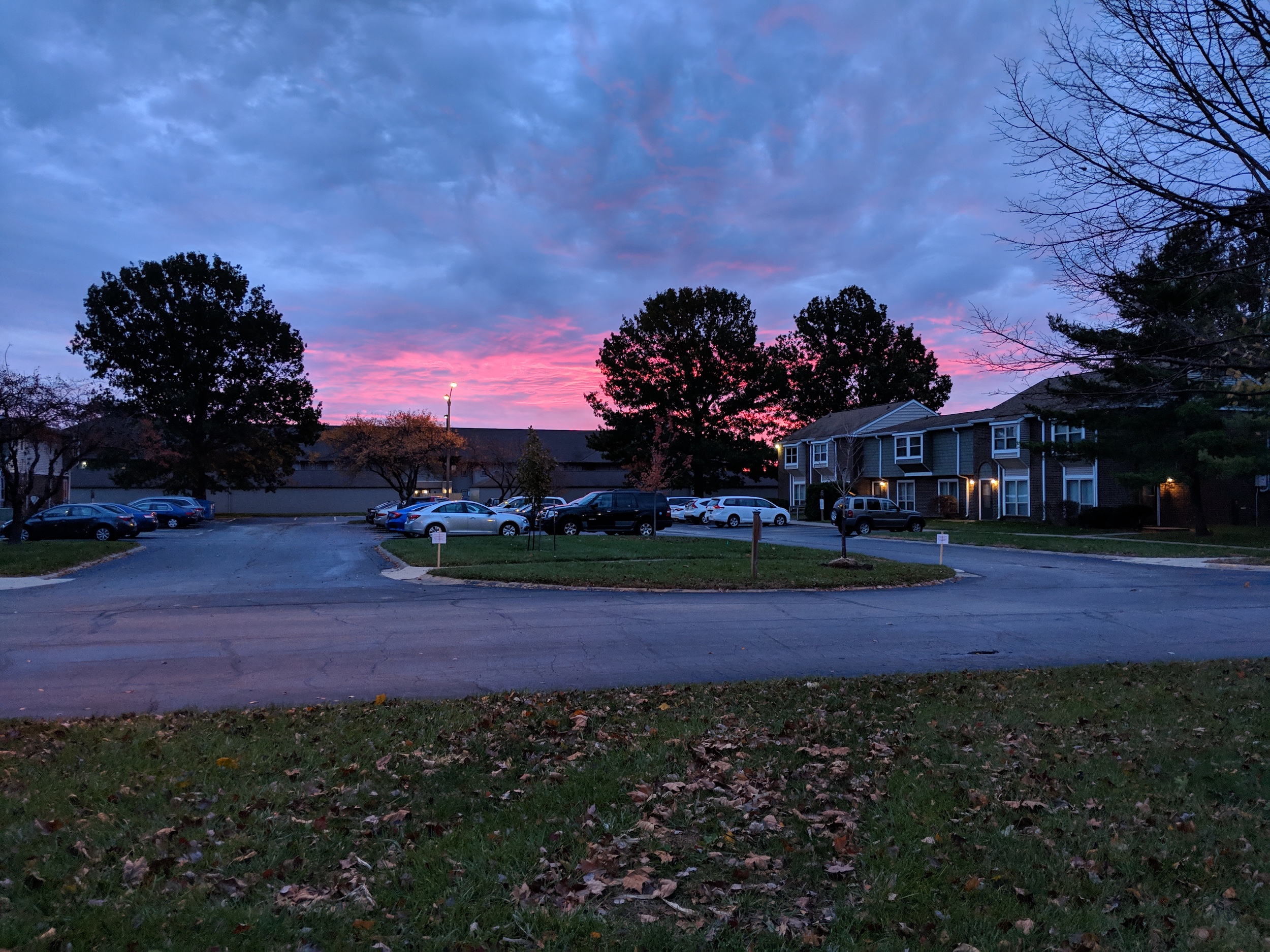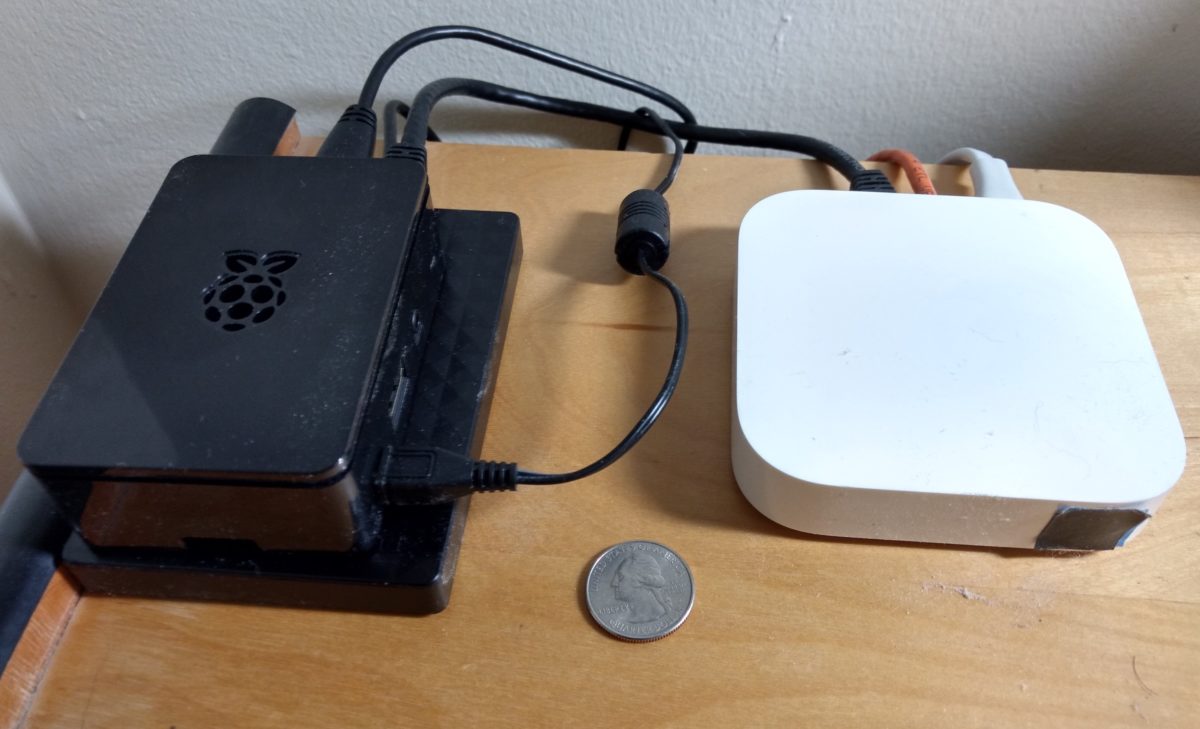Thanks to Srikanth Perinkulam for the very useful worked example of Self-hosting Jitsi video conferencing. Like everyone, I’ve been spending too much time in Zoom and Google Hangouts, and am looking for a secure, open alternative.
Tag: google-free option
2020-02-07 14:08
“Google Fit on my phone thinks I need more movement too. But I don’t let it push me around.” –@jackieLbrewer
2019-11-17 08:52
The one good thing about this is that it presents a space where alternatives to Google can compete.
The most discouraging aspect is how Google now doesn’t even bother to return results about vast swaths of the internet. —Bit Rot and Search Engines | Bierfaristo Blog
2019-09-21 11:09

2019-02-15 14:58
I went ahead and removed the link to my Google profile from the social media menu at the bottom of each page here, and removed Google+ from the list of tabs I routinely open on my browser.
Make my phone more like email

I used to love email. I still do, except so few people use it any more.
I used to use email almost like people use text messages now. I’d write little, one-topic messages and send them to one (or a few) people. Most of the people I exchanged email with had their email on for most of the day, so they’d get the message in just a few minutes and then be able to respond (or not, if they didn’t want to). If they (or I) didn’t want to be available to be contacted for a period of time, it was easy to put the computer to sleep, or turn off email notifications.
It was also easy to get a little more fancy than that. For example, I often set my email client to check email every hour or every half-hour, instead of the default of every few minutes. I was still able to be responsive to people who sent me email, but I wasn’t constantly interrupted by random notifications from random sources.
That’s half of what I’d like to be able to get my phone to do—batch up alerts, and then give them to me on a schedule that I pick.
The other half is to shut up about telling anybody else about what I’m doing. My email didn’t send any information back to people, except the information I told it to send back. (Sure, my mail server knew when I was connecting and from what IP address, but it kept that information to itself.)
If I was going batch up notifications so that I’d only get them every hour anyway, I’d like my phone to disconnect from the network for the 59 minutes in between. There’s no need for anybody, including Verizon and Google, to know where I am in between.
(Of course if I get my phone out to check something I’d like it to quickly connect to the network so it can do so, but that technology works just fine.)
I could almost do that by just turning my phone off for 59 minutes and then turning it back on, except that obviously doesn’t do the trick unless I carry around another timing device to remind me every hour that I want to turn the phone back on. Plus it’s a lot of fiddling around for the hours in which I don’t receive any notifications (not that there are very many of those).
Admittedly, all kinds of things are made easier by being always connected, such as the ability to prioritize a handful of alerts to come immediately—phone calls, text messages from intimates, tornado warnings, etc. But for me, the mental model of email was vastly preferable to the stupid array of alerts I’ve got now.
Sad about Flickr

In a couple of months the new owners of Flickr are going to delete most of my pictures there, if I don’t pay up for a pro account.
That makes me sad. I’ve used Flickr as my main photo-sharing site since 2004. It was arguably the first social media site, and even though its various owners managed to waste its potential over and over again, it was the best photo-sharing site around—better in every way than Instagram, for example.
I haven’t decided what to do yet.
I could share my photos elsewhere.
I’ve been using the Flickr app to auto-upload my photos to Flickr, which has been very convenient—when a photo doesn’t need much editing, I could just share the photo straight from that auto-upload.
There are two other places that already get my photos auto-uploaded: Google Photo, and (via Syncthing) my home server. Neither of those is a perfect choice.
I’m already more dependent on Google than I’m entirely happy about. (I quit trusting them after they broke Google Reader’s sharing functionality, even before they eliminated the tool completely. Even before that I tried to make sure that I’d be ready to go Google-free at any time if necessary.)
My home server is currently behind some overly restrictive firewall rules that keep it from being useful as a sharing site, although that’s supposed to get fixed. Even then it’ll be a single point of failure, rather under-powered machine with the photos on a single consumer-grade hard drive. It’s just not ready to serve as a production photo-sharing machine, even for a single user.
The most obvious place to share photos from is here at philipbrewer.net, because it’s where I share everything else. The downside is that my photos don’t get auto-uploaded here, and I probably don’t want them to be auto-uploaded here. I can manually upload each picture that I want to share and share it, but it’s not nearly as quick or easy a process as sharing something that’s been auto-uploaded to Flickr.
It works okay, though. Here’s a picture I did that with:

Running my own server again

A year and a half ago, my brother gave me a Raspberry Pi 3 as a birthday present, suggesting that I should use it to run my own server.
I used to run my own server. A friend who liked to build such things had built it. It had two ethernet ports, one connected to my cable modem and the other connected to my WiFi router, and it was running OpenBSD (then the most secure OS easily available) and was configured to serve as a firewall.
I used it as a server in other ways. I put an extra disk drive (40 GB!) in it where I could store files that I might want to access from elsewhere. (In particular, when I went to Clarion I copied my latest draft of my current story there each evening, in case of catastrophic computer failure.)
It didn’t require much upkeep, but it required more than none—which turned out to be more than I wanted to devote to it. At some point a serious security flaw was discovered in the OpenBSD release I was running. By then most desktop machines had built-in firewalls as did most routers, and I had Time Machine as a backup solution. It seemed safe to give up my server, and easier than updating it.
In the years since then, the use of cloud services has become ubiquitous, to the point that practically everything I do ends up in the cloud—my photos go to both Flickr and Google. I also use Dropbox (where I have Scrivener stash a backup copy of everything I’m writing) and I stash some amount of my music at both Google and at Amazon.
That’s all great—those services are well backed-up, and the servers are very likely running the latest security patches—but I really like the idea of having my own data on my own machines. But I want that without giving up the advantages of having my data in the cloud. Hence wanting to have my own server.
All that as prequel to my brother coming to visit this past week, and helping me get my Raspberry Pi server up and running.
Once the basic install of Raspbian was up and running, I went ahead and ordered a bit of hardware for it. I got a short ethernet cable to connect it to my router, so that it doesn’t have to do WiFi for basic connectivity (although WiFi and Bluetooth are built in). I also got a slightly more powerful USB power supply for it, mainly because I also got a portable USB hard drive that takes its power from the USB port, meaning that the power needs to be available to the Raspberry Pi. Finally, I got a case for it, so that I don’t just have a naked circuit board sitting on my dresser.
This time the hard drive is 1 TB rather than 40 GB.
For cloud functionality I’m following my brother’s example and running syncthing, which has the advantage of being able to handle being behind a NAT and not having a port exposed to the outside world. I’m running it on my Android phone as well and sharing my photos with a third place: my server. The server then shares them with my desktop machine, so they’re available to use. (That’s how I got the photo above: Taken with the phone and then transferred to the desktop within about a minute.)
I’m still sorting out my sharing strategy. I don’t want to share my whole Music folder with my phone, because it would use all the space there. (I’ll probably end up making a folder with an “essential subset” of my music to share with the phone.) I don’t think I want to share my whole Documents folder on my desktop machine, but I’m not sure yet. For the time being I’m sharing a folder I call “Active writing” with the files I’m currently working on, on the desktop, the server, and my laptop. That way they’ll be available wherever I want to work on them.
Other things are tougher. I’d like to have my own calendar server, but that doesn’t seem easy. I should go back to my post on the google-free option and see what else I was thinking about that I might now be able to implement.
For now, though, I’m pretty happy.
My previous server was rack mount width and maybe four or five inches tall, about the size of a stereo component. This one is maybe 3 inches by 5 inches, rather smaller than the hard drive it’s sitting on.
Zero unread RSS feeds (plus novel update)
Over a period of some months I’ve been working to clean up the set of feeds I try to follow. Today I got the unread count down to zero, perhaps for the first time since I started using a feed reader. Certainly for the first time in years.
I did it two ways. First, I did it the legit way, by unsubscribing from feeds that I didn’t actually read. Second, in just a few cases, I did it the cheating way, by just selecting a feed and clicking “mark as read.”
The first permanently reduces the burden of stuff I imagine that I ought to do.
The second just briefly hides the fact that there are some feeds I imagine I want to follow, but that I don’t actually keep up with. Still, I figure this is a test of sorts. Some of those feeds were pretty quiet. Maybe, if they’re not mixed in with all the stuff I’m not keeping up with, they’ll be easy to follow. And, if they’re not, I can always unsubscribe later.
This flurry of feed-pruning activity brought to you by procrastinating on the novel.
I’m in the midst of some tough slogging as I push through the final third. Even after my previous pass through this bit, it is still written a lot like a short story. The scenes are highly compressed, with lots of bits merely referred to. As I reach those scenes, it takes me a while to uncompress them—to see the two or three or four scenes represented by the existing text, and then to compose those scenes, placing them in the right sequence in the story.
I’m actually really enjoying that work, once I get into it, but each new scene is hard to start on—largely because I’m quite proud of the old, compressed versions. The uncompression work feels like taking a finely crafted miniature that I spent days painting, cutting it up into pieces, sticking each piece in the middle of a big canvas, and then trying to paint a new picture that incorporates that bit of the miniature. (It would probably be better to just do the necessary new scene “inspired” by the old scene, and I’ve done some of that, but that turns out to have problems as well.)
In any event, progress continues. It’s just hard.
As I go to click the “publish” button on this post, my unread feed count stands at zero.
An app someone should write
Here’s an idea for an app that someone should write. I call it MeetAt. The code should be pretty straightforward—you could easily enough build it on the guts of any location-aware app.
The user interface is simple. You see a short of list of common contacts (but probably also access to the whole contact list). You pick one or more contacts to whom you’ll send a message in the form of “Hey, let’s meet at [location]!”
Next you see a short list of common locations—home, work, the coffee shop, the library . . . Ideally the list would piggyback on some already existing list of locations that you care about, but in any case it would be configurable.
That’s all pretty obvious, but here’s the (slightly) clever bit: At the top of the list would be a button for “somewhere in between,” and when you clicked it you’d get a list of locations that are in between where you are and where your contact is. (This is assuming that you’ve previously approved sharing location information with one another via this app.)
The easiest implementation of that would be simply to draw a line, find the midpoint, and then do a Google location look-up which will present you with a list of named places near that location. (Or, if you want to be Google-free, something based on Open Street Map or something else.
You could, however, enhance that in a lot of ways. For example, your device could detect if one of you is on foot or on a bicycle or in a car, and could suggest locations that could be reached in about the same amount of time by both parties, given relative travel speeds. If one of you is on a bus, it could identify which upcoming bus stop would be the closest walk for the person on foot.
The app would also generate an expected meeting time, based on whatever travel modes it was expecting people to use.
The result would be a message sent that says, “Let’s met at [location] in [n] minutes,” to which the other person could reply “Okay” with a single click. With a few more clicks, the other person could propose an alternative location or time.
Personally, I’d use an app like that all the time.
